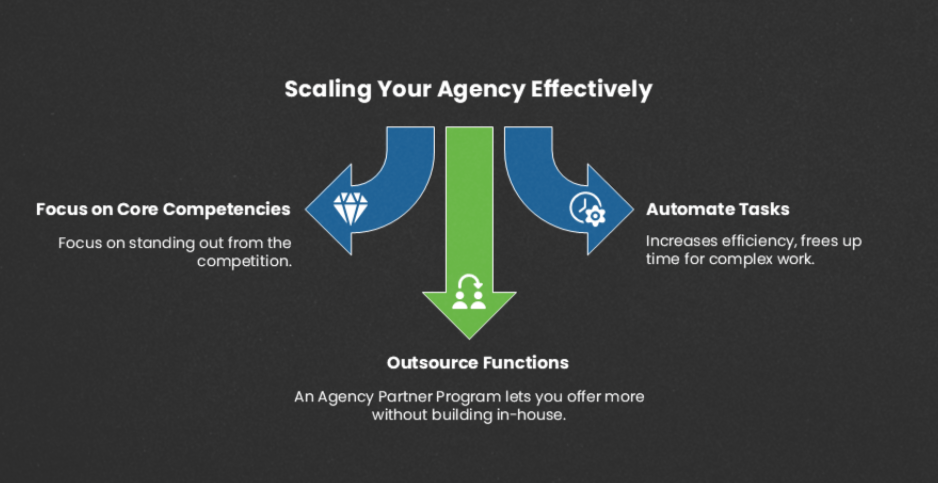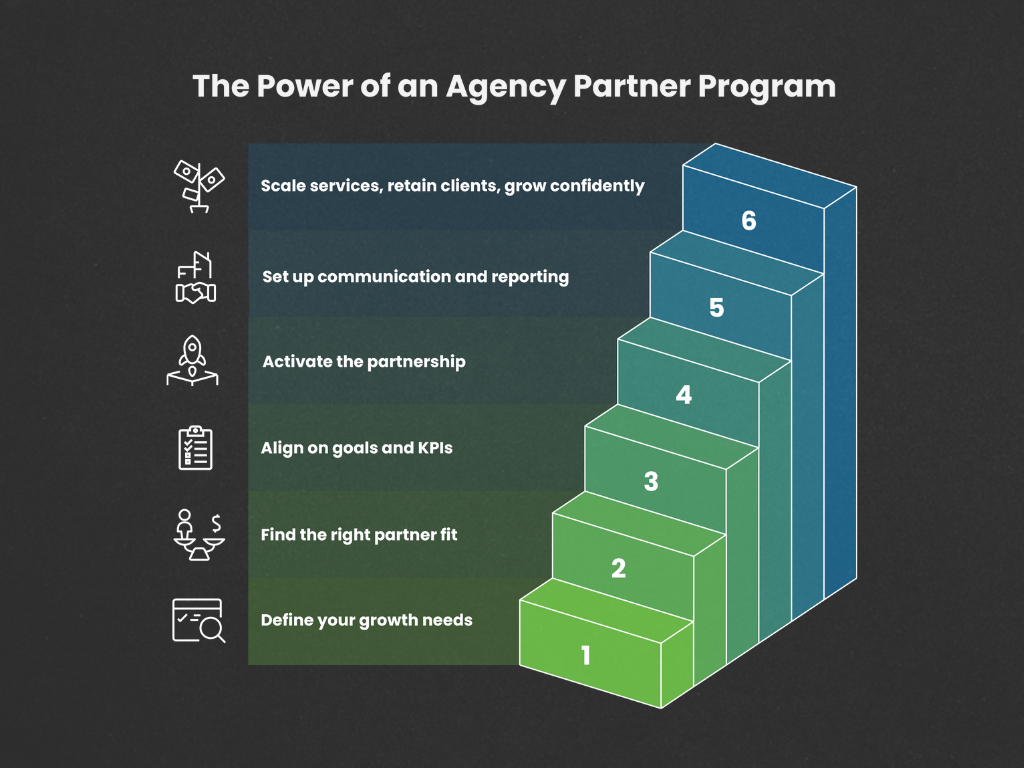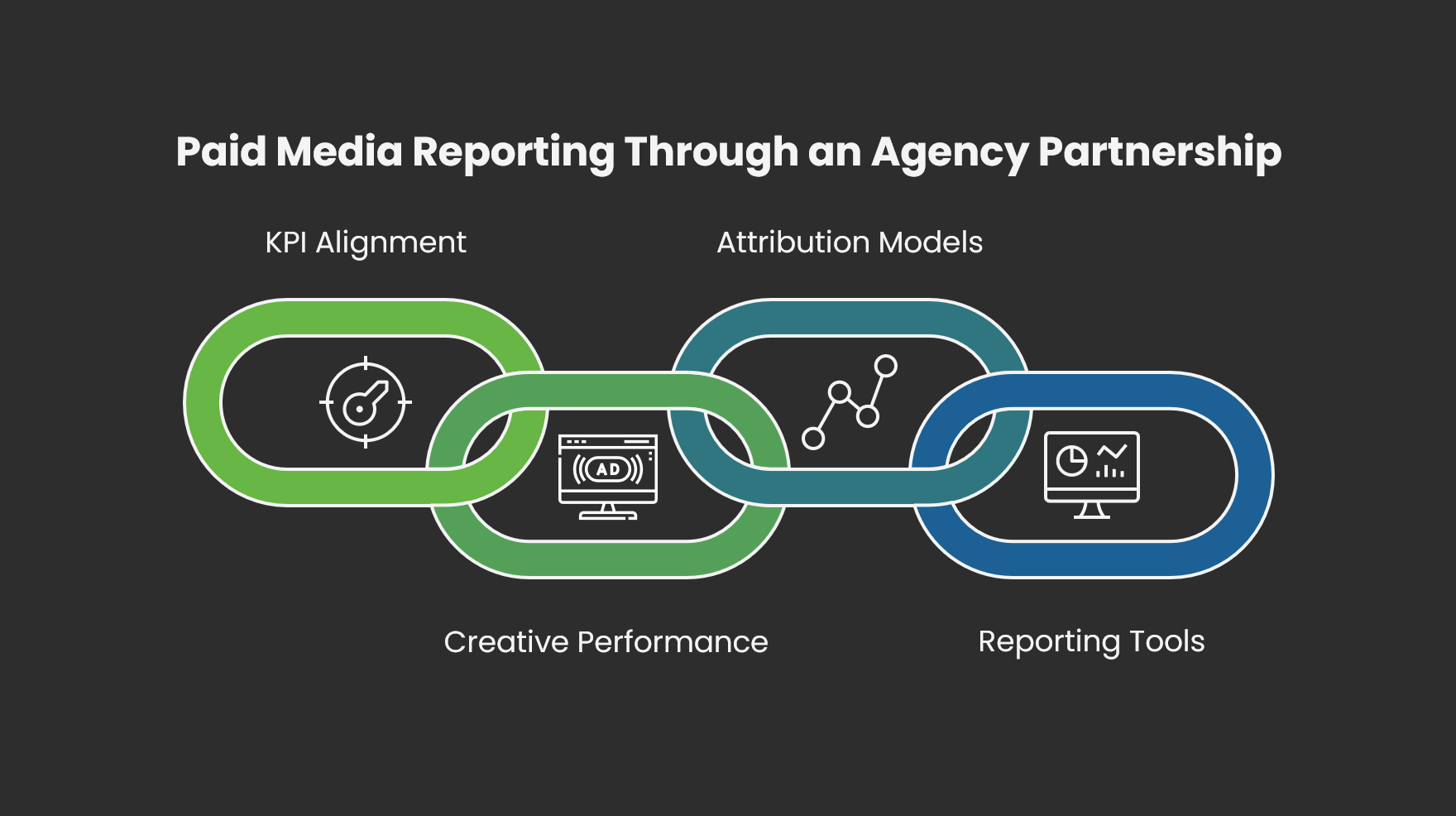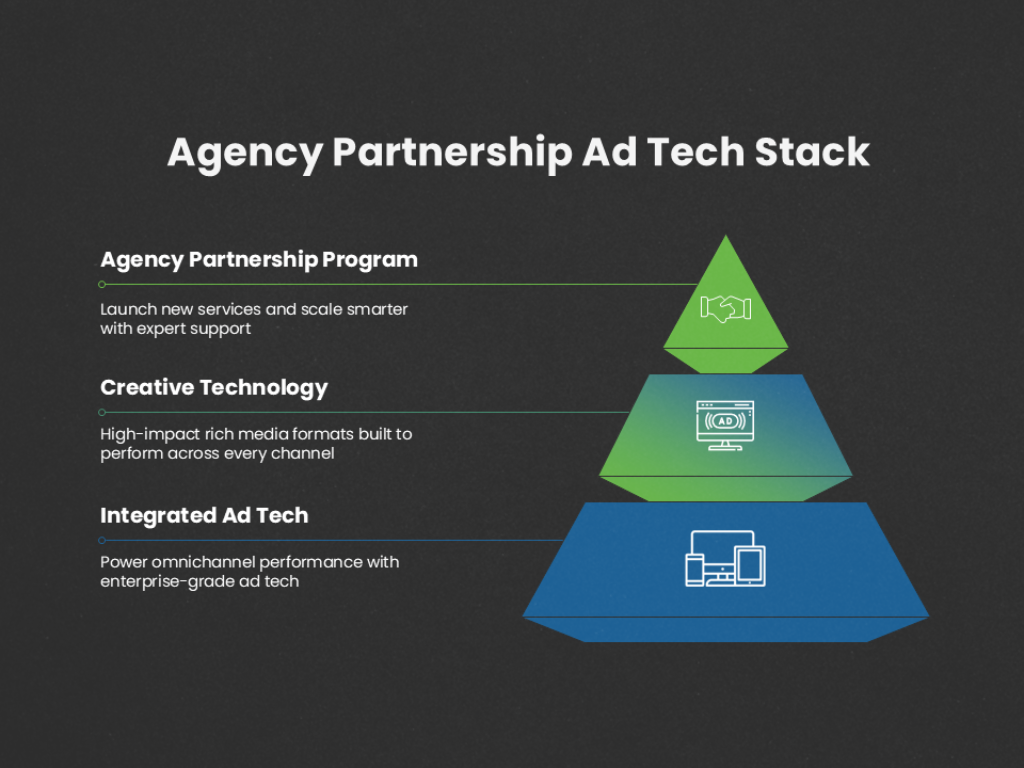
How To Scale Your Agency With an Agency Partnership Program
Despite the continued growth of digital advertising, scaling an advertising agency has never been more challenging. While programmatic display ad spend is forecasted to increase by 13.3% in 2025, reaching $178.25 billion in the U.S., capturing this growth isn’t guaranteed.
The reality is that the programmatic advertising space is evolving into a highly saturated environment as the rapid growth of online businesses creates a continuous demand for innovative marketing strategies, where success depends on creativity, specialization, and leveraging the latest technologies. From 2018 to 2023, the number of digital agencies in the U.S. and Canada grew by 54%, and having a competitive edge is now more important than ever. Furthermore, DTC and B2B marketers now face a wide array of innovative tools and advertising technology that demand a substantial investment of time and resources for proper evaluation and integration, which can lead to decision inertia.
To scale operations effectively, ad agencies should strategically divide their service offerings into three key categories:
- In-House Core Competencies:
What makes your agency irreplaceable? Focusing on the service offering that makes you unique to your clients is crucial to stand out in a crowded marketplace. This also ensures your most critical projects get the attention needed for optimal execution.
- Automated Tasks:
Increasing demand for quick execution across various channels, markets, and clients means that automating routing operations has become essential. CTV advertising agencies, for instance, must manage omnichannel campaigns with varied strategies, creative formats, and flexible workflows. Automating repetitive tasks frees up internal teams to tackle high-value, complex work that demands nuanced understanding.
- Outsourced Functions:
Your agency doesn’t need to do it all. As digital advertising evolves, strategic collaboration with specialized partners becomes an indispensable asset. Outsourcing complex solutions like CTV advertising, digital out-of-home (DOOH) advertising, and commerce media enables agencies to offer high-quality services without expanding their in-house teams. Moreover, forming these strategic agency partnerships can be mutually beneficial, allowing both parties to deliver more comprehensive solutions to clients.
Challenges Agencies Face When Scaling
The challenges that advertising agencies face when trying to scale can be broken into two main categories:
Keeping Up with Ad Tech Innovation
With new programmatic technologies emerging constantly, agencies must be selective in what they adopt. On average, agencies offer six distinct services2, and as client expectations grow, agencies feel pressure to expand their offerings. However, the cost and complexity of expanding beyond core expertise can put a strain on operations.
According to Promethean Research’s Advertising Agency 2024 Report, 91% of agencies have fewer than 50 employees, meaning scaling requires smart resource allocation. Unlike product-based businesses, service-based agencies face inherent scaling challenges due to the labor-intensive nature of their work. Each client project is unique, limiting the ability to apply turnkey solutions. Given that most agencies operate with small teams, scaling inevitably means managing more client projects, requiring more labor in addition to technology.
To scale effectively, digital-first advertising firms must be strategic in their ad tech and martech adoption. Rather than simply expanding services, agencies should focus on integrating solutions that complement their strengths.
Market Saturation & Competition
Scaling is becoming increasingly difficult as the digital advertising space grows more crowded. The low barrier to entry has led to an influx of businesses using retail media advertising, streaming TV advertising, and B2B programmatic strategies across both walled gardens and the open internet, intensifying competition for ad inventory. As a result, skilled marketers must work even harder to differentiate themselves in a sea of lower-quality content.
In a crowded marketplace, clients have more options, forcing them to be more discerning about the agencies they choose to do business with. Leveraging your agency’s internal improvements through focusing on core competencies, automating tasks, and evaluating your scaling options is more important than ever to navigate external challenges such as market saturation.
How Does an Ad Agency Scale?
Agencies scale smarter by focusing on what they do best, automating execution, and outsourcing where it counts.

Scaling with Retainer-Based Services
One of the most effective ways to scale sustainably is shifting high-value offerings into recurring revenue streams. First, pinpoint your strategic differentiators: elements of your work that clients find the most valuable and the projects that your competitors find hard to replicate. This can be done as a two-pronged approach:
- Client Feedback: Analyze client reviews by identifying what they appreciate most about your services and where they express dissatisfaction with competitors.
- Competitive Benchmarking: Study what other agencies are offering by assessing their scope, specialization, and expertise. Are they offering a broader range of services or a niche focus? How are they leveraging emerging technologies like AI, machine learning, or automation? Look at their client interactions and retention rates to understand how they sustain long-term relationships.
Once you’ve identified your strategic differentiators, explore the ways your team can turn them into recurring revenue streams. For example, as a programmatic advertising agency, we bundle our expertise in data-driven targeting, custom audience segmentation, and omnichannel advertising scale into an ongoing, retainer-based service. By providing continuous campaign optimizations and audience insights, we help our clients target high-intent users with precision, increase reach across the open internet, and avoid wasted ad spend. We strive to provide more value by uncovering new audience targeting opportunities, integrating new ad tech solutions, and providing 24/7 access to an online reporting dashboard.
Positioning your high-value services as ongoing engagements not only secures a more predictable cash flow, but also builds deeper, lasting relationships with your clients. This ensures they continue to rely on your expertise to navigate evolving market trends and internal needs.
Adopting Automation
With so many automation tools available, choosing the right one can significantly boost your team’s efficiency. Eliminating manual tasks such as data entry and report generation frees up time for high-value work. However, not all tools are created equal.
When evaluating automation platforms, zero in on two key factors:
- Essential Features: What are the must-have capabilities of this potential platform?
- Ease of Use: Does your team have the bandwidth to learn a complex automation tool, or do you need something more turnkey and user-friendly?
New tools are constantly emerging and crowding the market, and finding the right fit can be overwhelming. To speed up your search, look for recommendations from trusted industry sources or explore marketing forums where professionals discuss their use cases and integration.
Strategic Agency Partnerships
Some services require specialized expertise, significant human oversight, or simply don’t align with your agency’s core strengths, making them ideal for outsourcing. Developing a strategic partnership with a trusted agency allows you to offer high-quality services such as rich media advertising and digital out-of-home solutions without stretching your internal resources.
A strong agency partner program provides several key advantages to you:
- Lean, Efficient Teams: Scale operations without adding overhead.
- Access to Proven Technology: Leverage advanced tools without large, upfront investments while eliminating the financial risk of licensing expensive technology on a long-term basis
- Sustainable Profits: Maintain stable margins while expanding service offerings.
When outsourcing services, agencies typically choose between two models:
1. Managing the Client Relationship In-House:
With this relationship model, your agency remains the primary point of contact, ensuring a seamless, full-service experience for your clients. You retain direct control of client communications while your partner executes the outsourced service behind the scenes.
2. Referring Clients Directly to a Partner:
This means less workload for your team while maintaining a clear division of responsibilities. Clients also know exactly who is managing each aspect of their strategy and your agency earns passive income without the need for internal execution.
In our experience, agencies are evenly split between managing the client relationship in-house or referring clients to the trusted agency partner. A direct referral model tends to work best for agencies with heavy workloads. The referral model allows for ultimate collaboration between the agency partners while providing transparency for the client. That said, how your agency plans to manage the client relationship is a strategic and sensitive decision, and there is no right or wrong answer!
The Path to Sustainable Agency Growth
Despite continued investment in digital advertising and its skyrocketing growth, scaling a full-service or creative agency remains a complex challenge. Increased competition, evolving advertising technology, and growing client expectations make it difficult to expand operations without stretching resources too thin. However, agencies taking a strategic approach to focusing on core competencies, leveraging automation, and forming resourceful outsourcing partnerships are best positioned for long-term success.
For agencies looking to expand into high-touch service offerings, a strategic partnership can be a game-changer, providing expertise and efficiency without requiring a full in-house team.


.svg)
.svg)



